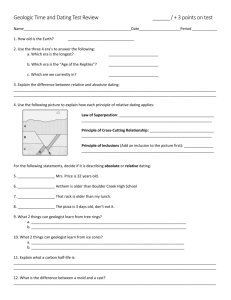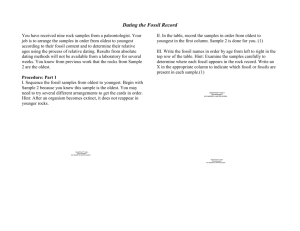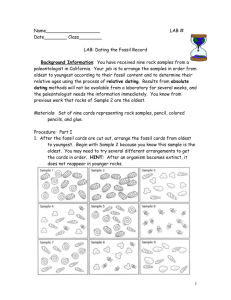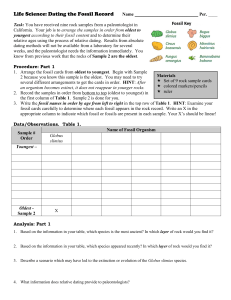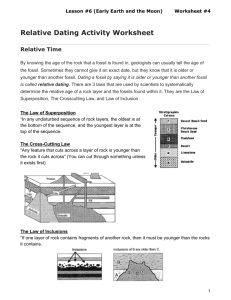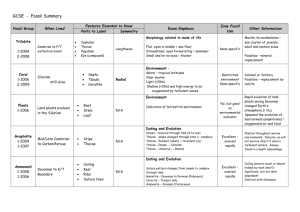Name Date Block
advertisement
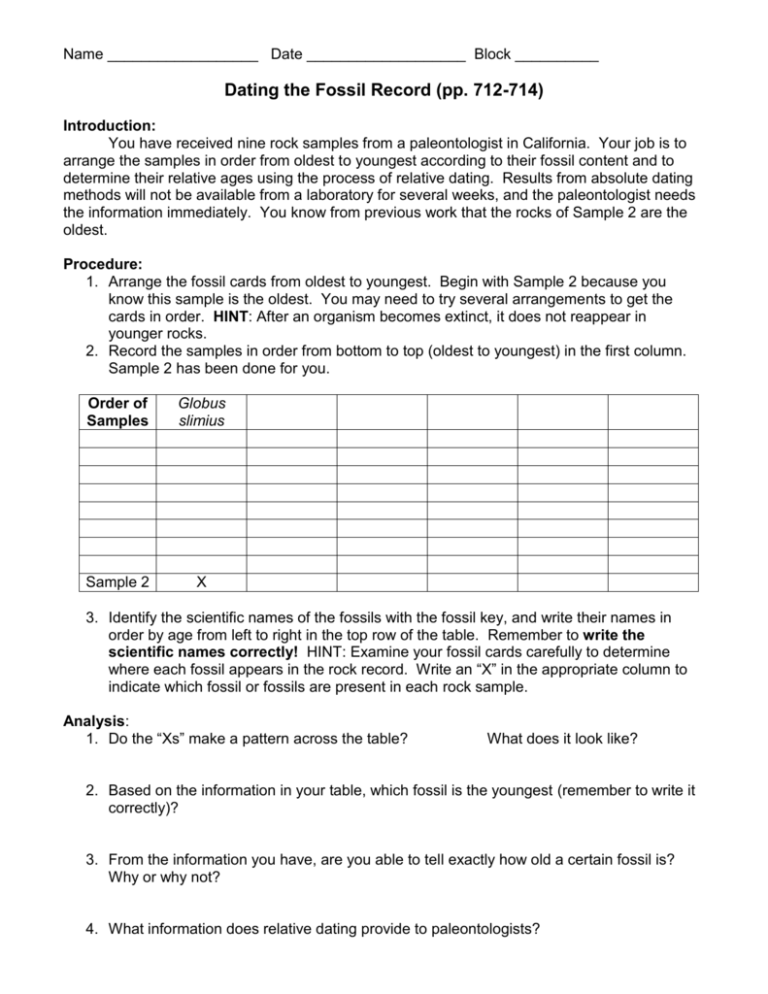
Name __________________ Date ___________________ Block __________ Dating the Fossil Record (pp. 712-714) Introduction: You have received nine rock samples from a paleontologist in California. Your job is to arrange the samples in order from oldest to youngest according to their fossil content and to determine their relative ages using the process of relative dating. Results from absolute dating methods will not be available from a laboratory for several weeks, and the paleontologist needs the information immediately. You know from previous work that the rocks of Sample 2 are the oldest. Procedure: 1. Arrange the fossil cards from oldest to youngest. Begin with Sample 2 because you know this sample is the oldest. You may need to try several arrangements to get the cards in order. HINT: After an organism becomes extinct, it does not reappear in younger rocks. 2. Record the samples in order from bottom to top (oldest to youngest) in the first column. Sample 2 has been done for you. Order of Samples Globus slimius Sample 2 X 3. Identify the scientific names of the fossils with the fossil key, and write their names in order by age from left to right in the top row of the table. Remember to write the scientific names correctly! HINT: Examine your fossil cards carefully to determine where each fossil appears in the rock record. Write an “X” in the appropriate column to indicate which fossil or fossils are present in each rock sample. Analysis: 1. Do the “Xs” make a pattern across the table? What does it look like? 2. Based on the information in your table, which fossil is the youngest (remember to write it correctly)? 3. From the information you have, are you able to tell exactly how old a certain fossil is? Why or why not? 4. What information does relative dating provide to paleontologists?

